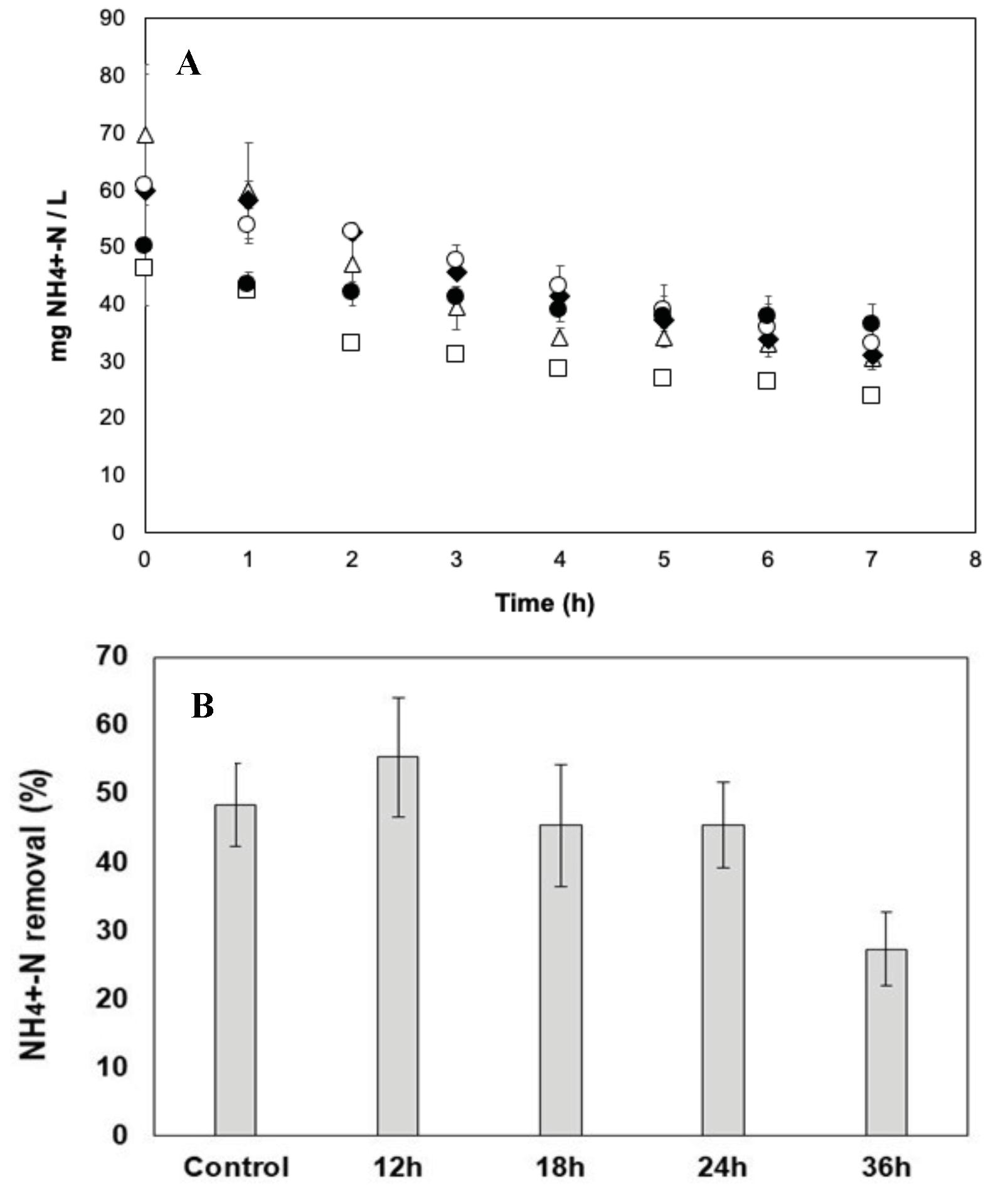 |
|
The classic question from wastewater treatment plant (WWTP) operators is, how long can a secondary reactor be kept unaerated after an aeration system failure? Therefore, in the present research, samples of activated sludge (AS) were taken from a WWTP and left without aeration for 12, 18, 24, and 36 h; simulating an aeration failure. Subsequently, the activity of AS lacking aeration was evaluated in batch cultures. The results showed that the lack of AS oxygenation affected its metabolism. For example, the heterotrophic activity stopped completely when AS was not aerated for 24 h. The nitrifying activity, in the experiments from 12 to 24 h without aeration, the ammonium removal did not change, but there was an increase in nitrite concentration. In the 36-h experiment without aeration, the ammonium consumption rate and removal efficiency decreased by 56% and 43%, respectively, regarding the control. N2O was produced in the period when the AS was not aerated, which could be responsible for these metabolic and kinetic changes. Finally, this study suggested don't leave for more than 24 h the activated sludge without aeration for a quick recovery or to diminish the damage.
Keywords: activated-sludge, aeration, inhibition, nitrification, heterotrophic-activity.
|
|
 |

